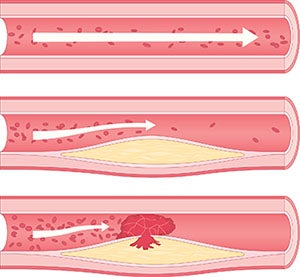Overview
Contact Us The most common cause of cardiovascular disease is atherosclerosis, which results from the buildup of fatty deposits and plaque on the artery walls. Over time, this buildup narrows the arteries and reduces the ability to carry blood effectively.
The most common cause of cardiovascular disease is atherosclerosis, which results from the buildup of fatty deposits and plaque on the artery walls. Over time, this buildup narrows the arteries and reduces the ability to carry blood effectively.
There are many types of cardiovascular diseases that do not cause symptoms until a serious medical emergency occurs. The best way to treat a cardiovascular disorder is with early detection and to be aware of the many risk factors, some of which are listed below:
- Diabetes
- Family history of atherosclerosis
- High blood pressure
- High cholesterol
- Obesity
- Smoking
For patients at an increased risk for cardiovascular disease, a range of interventional radiology and interventional cardiology procedures are available. These procedures are used to detect heart disease as early as possible. Catheter-assisted CT scan and magnetic resonance angiography (MRA) can produce highly detailed views of the blood vessels and identify areas that may be blocked or damaged.

